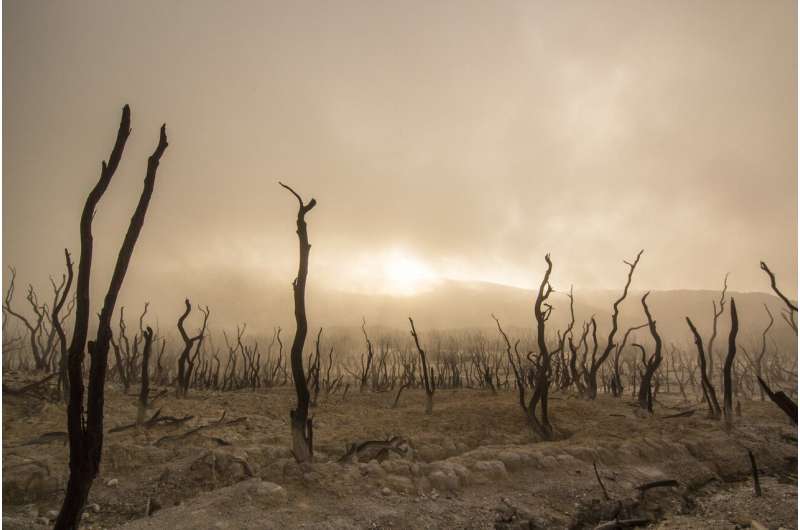The main purpose of this ongoing blog will be to track planetary extreme, or record temperatures related to climate change. Any reports I see of ETs will be listed below the main topic of the day. I’ll refer to extreme or record temperatures as ETs (not extraterrestrials).😉
Main Topic: Warming to 1.5°C Above Preindustrial Conditions in the Next Five Years?
Dear Diary. The biggest elephant in the room this week has been a scientific report indicating that the planet will achieve further warming such that temperature averages will be at 1.5°C in a very short period of time…only five years. Of course, we know that 1.5°C is the first proverbial line in the United Nation’s sand that we should not cross lest our climate get out of control. As I keep stating, every time a major prediction concerning “how fast and/or how badly” our climate will change, I will report these as a main topic for one day.
It appears that planetary temperature averages are at their nadir this year due to a double dip La Nina, or the second year that a Pacific La Niña pattern has cooled the Earth, if just by a smidgeon. Currently the Earth is sitting at about +1.1°C above preindustrial conditions. During the last super El Niño the planet almost spiked up to +1.5°C, so I’m quite sure that will happen during the next “typical” El Niño regime. Will we see this in the next five years? I would write that it’s going to be close.
There have been numerous writeups on this new report, which I’m linking at the end of this phys.org report:
https://phys.org/news/2022-05-key-global-threshold-years.html
MAY 11, 2022
Key global warming threshold may be crossed in next 5 years, study says
by Theresa Braine

The world is on track to breach a key global warming threshold, according to a new report.
There’s now a 50-50 chance that the world will warm by more than 1.5 degrees Celsius over the next five years.
In 2015, chances were near zero.
Moreover, between now and 2026, there’s a 93% likelihood that one of the next five years will be the warmest on record, knocking 2016 out of its current No. 1 spot, the World Meteorological Organization said in its report, released late Monday.
Even though the 1.5 degree C increase wouldn’t last—this time—it could still cause irreversible changes, the scientists said. This echoed warnings in a February report from the Intergovernmental Panel on Climate Change, which laid out 127 ways that conditions could get worse, some permanently.
The WMO tapped the knowledge of the world’s top climate scientists and culled data from 11 forecast centers and their highly accurate prediction systems to arrive at the conclusion in the report, the Global Annual to Decadal Climate Update.
“The 1.5°C figure is not some random statistic,” WMO Secretary-General Prof. Petteri Taalas said in a statement accompanying the report. “It is rather an indicator of the point at which climate impacts will become increasingly harmful for people and indeed the entire planet.”
The 1.5 deg C is the lower number arrived at by the Paris Agreement on Climate Change, which set long-term goals for all countries to reduce global greenhouse gas emissions so that temperatures would not rise above 2 deg C. Even the 1.5 deg C poses a risk, the Intergovernmental Panel on Climate Change has said.
While the prediction was grim, reaching this 1.5 deg C threshold is not the same as hitting the one signed onto in the Paris Agreement, scientists not involved in the report told The Associated Press. The Paris Agreement’s figure would take much longer to know, given that it’s a long-term average covering 20 to 30 years, they said.
“This is a warning of what will be just average in a few years,” Cornell University climate scientist Natalie Mahowald, who was not part of the forecast teams, told AP.
“A single year of exceedance above 1.5°C does not mean we have breached the iconic threshold of the Paris Agreement, but it does reveal that we are edging ever closer to a situation where 1.5°C could be exceeded for an extended period,” said lead author Leon Hermanson of the United Kingdom’s Meteorological Office, which coordinated the team.
The temperatures the report used are “a little warmer” than what NASA and the U.S. National Oceanic and Atmospheric Administration (NOAA) use, NASA climate scientist Gvain Schmidt told AP, adding that he thought 10 years was a more accurate window.
What scientists did agree on was the need to keep reducing emissions.
“For as long as we continue to emit greenhouse gases, temperatures will continue to rise. And alongside that, our oceans will continue to become warmer and more acidic, sea ice and glaciers will continue to melt, sea level will continue to rise, and our weather will become more extreme,” Taalas said. “Arctic warming is disproportionately high, and what happens in the Arctic affects all of us.”
Explore further: Earth given 50-50 chance of hitting key warming mark by 2026
Other related reports:
Here are “ET’s” recorded from around the planet the last couple of days and extreme temperature outlooks:
Here is more April 2022 climatology:
Here is more climate, weather and science news from Thursday:
(As usual, this will be a fluid post in which more information gets added during the day as it crosses my radar, crediting all who have put it on-line. Items will be archived on this site for posterity. In most instances click on the pictures of each tweet to see each article. The most noteworthy items will be listed first.)
(If you like these posts and my work please contribute via the PayPal widget, which has recently been added to this site. Thanks in advance for any support.)
Guy Walton “The Climate Guy”